In Part 11 and Part 12 I looked at the introduction of alcohol based fuel with my Water/Methanol Injection system and Ethanol fuel blending. In Part 13 we're going to continue our journey deeper into the fuel system of the car and further upgrades!
The Series
In Part 13 I'm going to be looking at upgrades to the fuel systems following some pretty big changes in recent posts, especially the ethanol based fuel my car now runs. Of course, getting fuel into the engine is required to make power and the more fuel you can have, the more power you can make.
High Pressure Fuel Pump
In most typical fuel systems in a car there are 2 fuel pumps. We have the Low Pressure Fuel Pump (LPFP) that sits in the fuel tank in the rear of the vehicle and moves the fuel from the back of the car to the front of the car at low pressure, it's simply moving it to where it's needed. At the front of the vehicle we then have the High Pressure Fuel Pump (HPFP) that cranks the pressure all the way up to the pressure needed to inject the fuel into an operating engine. The LPFP will typically transport the fuel the length of the car in rubber hoses where everything after the HPFP with be a solid metal pipe due to the pressure involved. The LPFP is also an electric pump because the pressures involved aren't high, 10PSI-100PSI, where the HPFP will be a mechanical pump because that's the only way to get to the high pressures required of 2,000PSI+!
Because the job of the LPFP is the easier of the two, it's typical to hit issues with your HPFP first. Not only does it need to get the fuel up to those insanely high pressures, it needs to maintain the pressure and enough flow to match the demand the engine is placing on it. Here is the layout of my high-pressure fuel system:

Circled in red, top-left, is the HPFP itself. This is driven off a dedicated, 3-point lobe on the camshaft so the HPFP gets 3 'pumps' per revolution of the camshaft. The high-pressure fuel then travels down the hard lines indicated and into the fuel rail, the long oval section highlighted just to the right. The fuel rail fills with pressurised fuel and then the injectors feed off that and into the cylinders, opening to fire a squirt of fuel into the cylinder when required. Here you can see my standard HPFP installed and the replacement HPFP ready to go in:
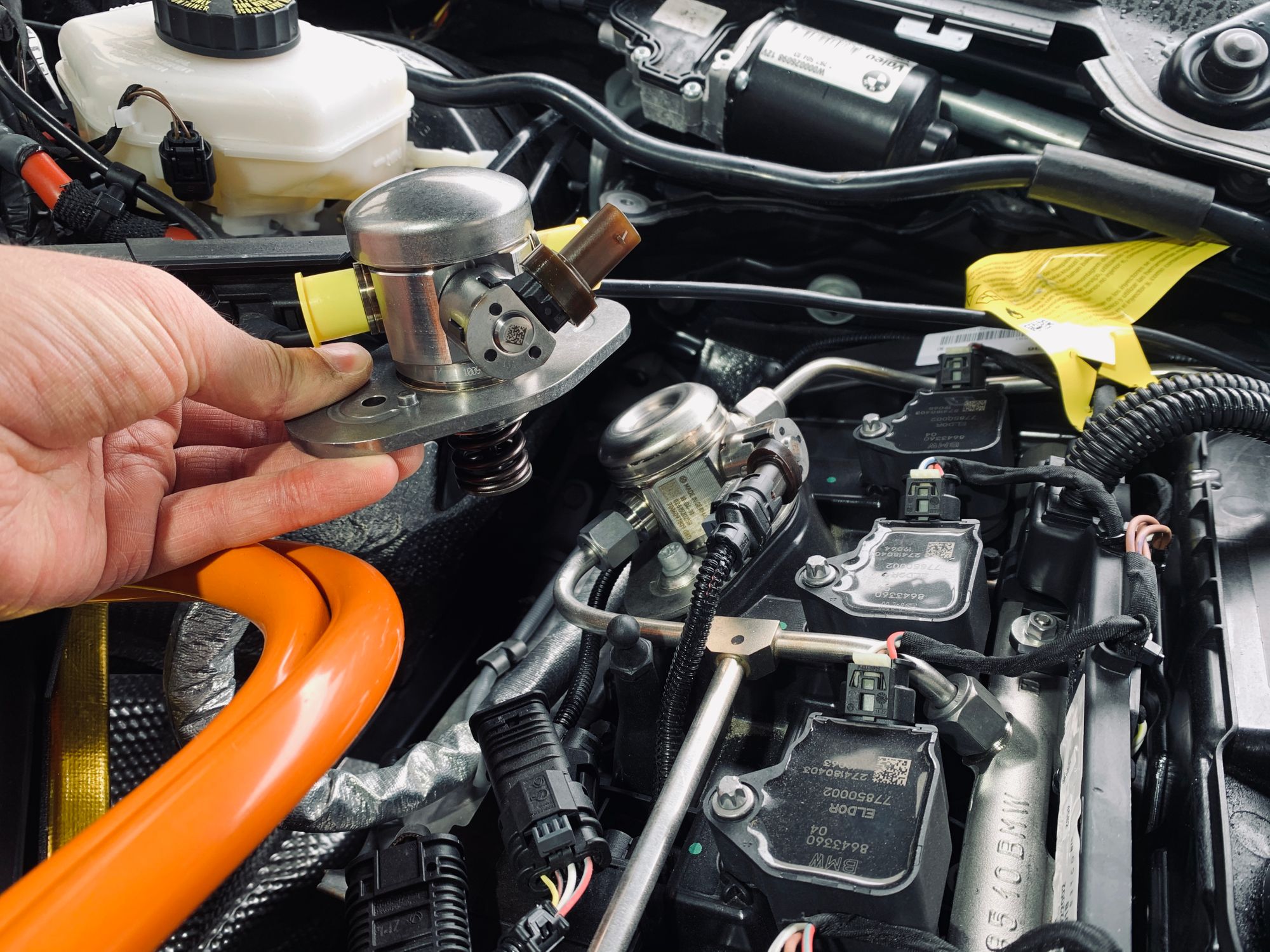
In essence, this is a very simple job. You need to remove the old HPFP, it's held in by two bolts, and install the new HPFP. In practise it is actually a very simple job too, you just need to remove a lot of other parts to get to the part you need! When removing and installing the HPFP the bolts need to be torqued down properly and using the correct sequence, you need to drain the high-pressure fuel from the system before you start and prime the system when you're done, but besides some fairly standard steps, there's not much to it. Because I'm working with fuel and the fuel system though, like any other job I do on my car, you don't screw around when it comes to safety. This was in reach the whole time I was working on the car and I also have a smaller fire extinguisher that lives in the boot (trunk) too.
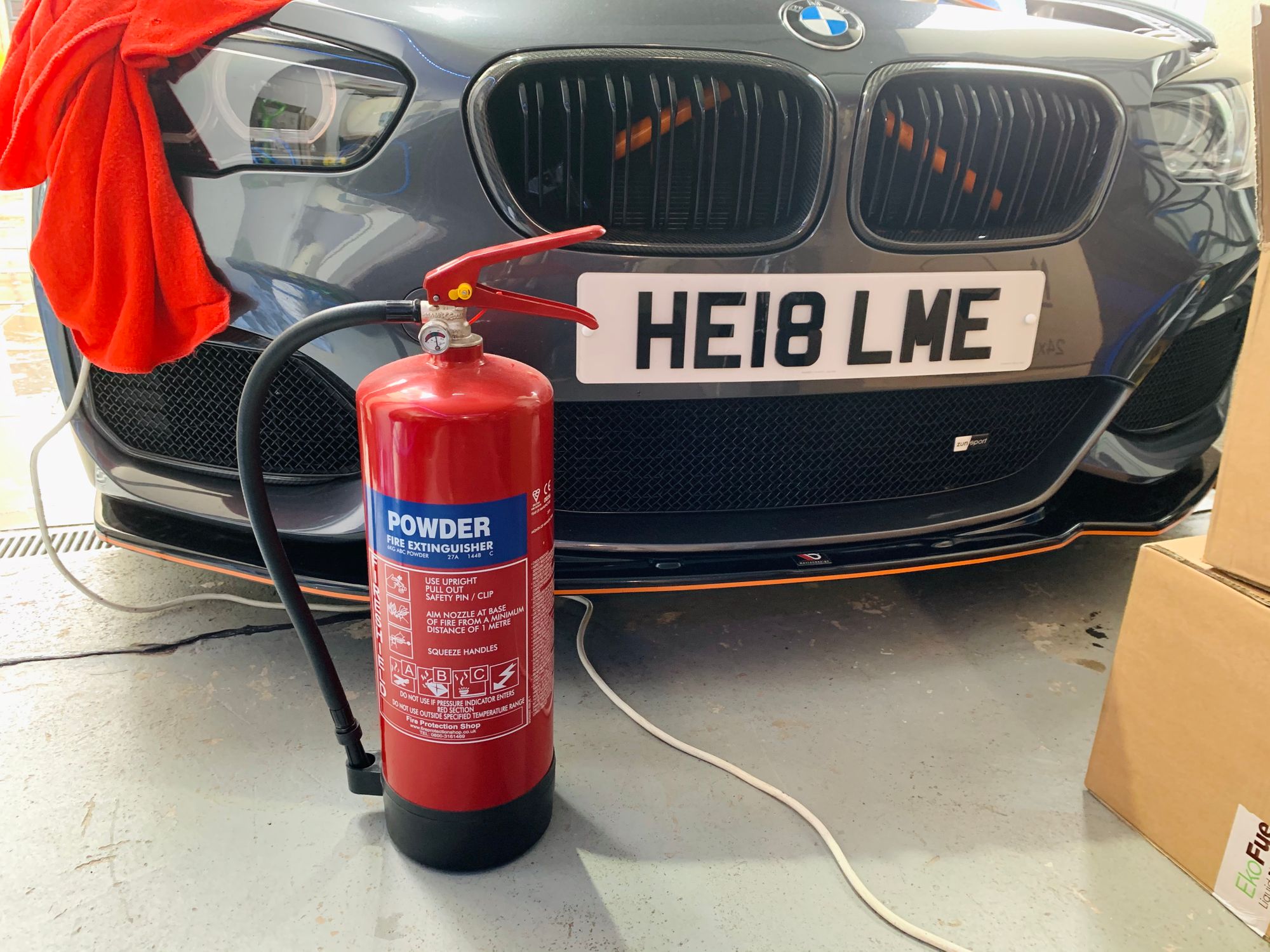
Here's the original HPFP after I removed it and compared it to the new HPFP I'm installing. As you can see from a glance at the picture, the new HPFP has a larger piston size. The bottom of that piston protrudes inside the head of the engine and the bottom of the spring is where the lobe on the camshaft acts on. As the camshaft rotates, the lobe pushes the piston up, compressing the fuel and forcing it out into the high pressure fuel lines and the spring returns the piston for it to be compressed again as the camshaft continues to rotate.
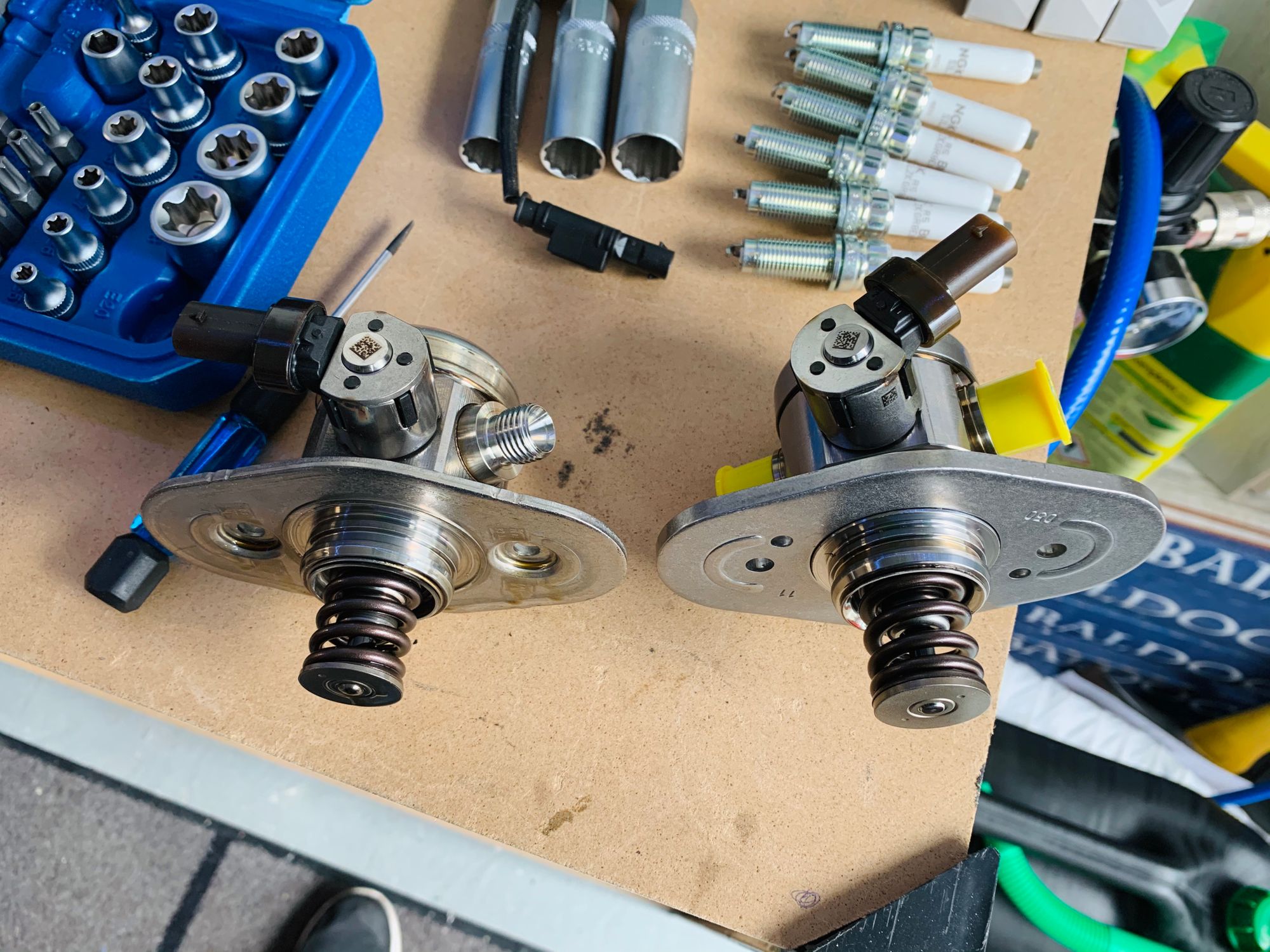
I have an accurate set of vernier calipers so I took some measurements to see how much different they were.
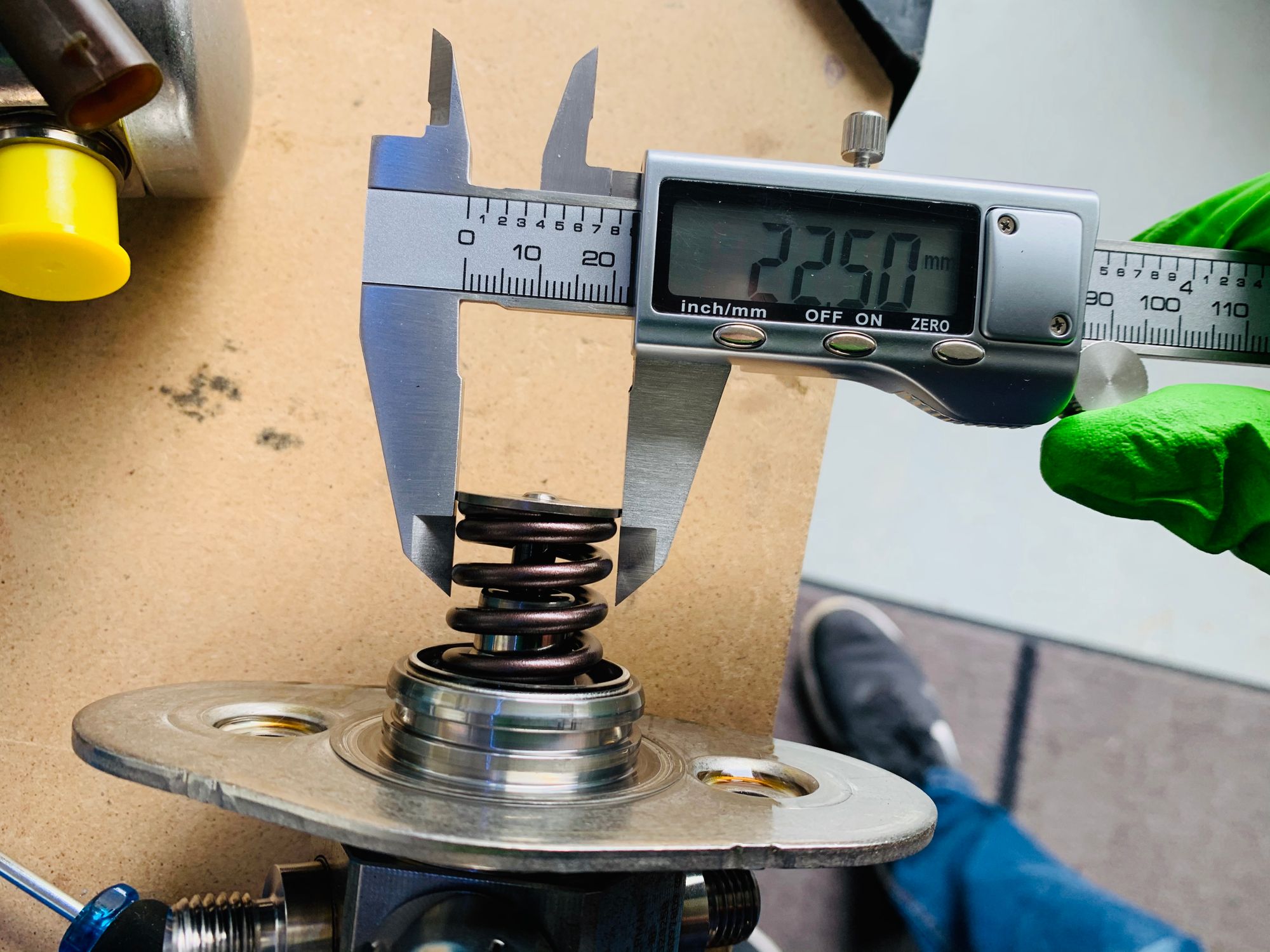
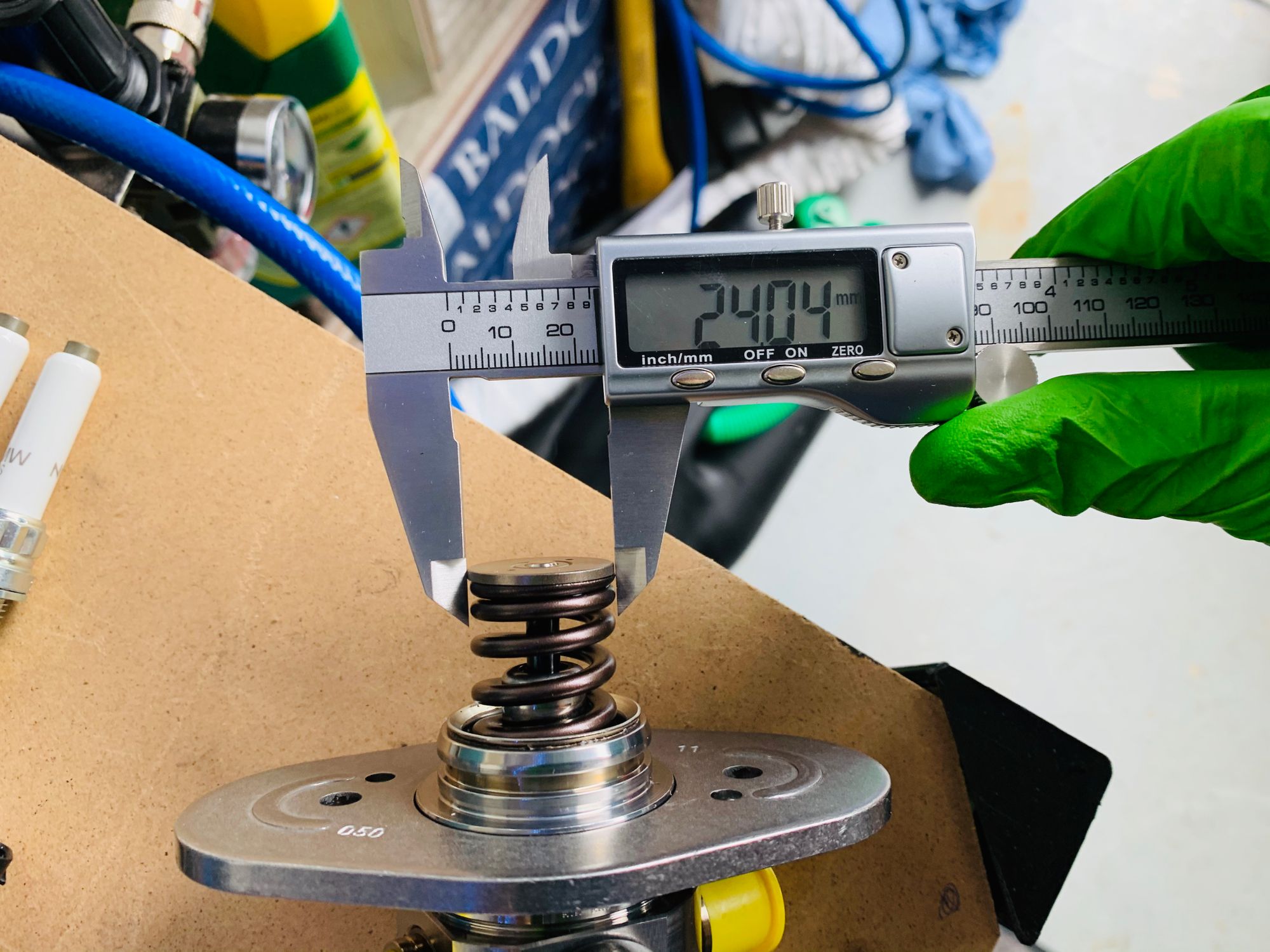
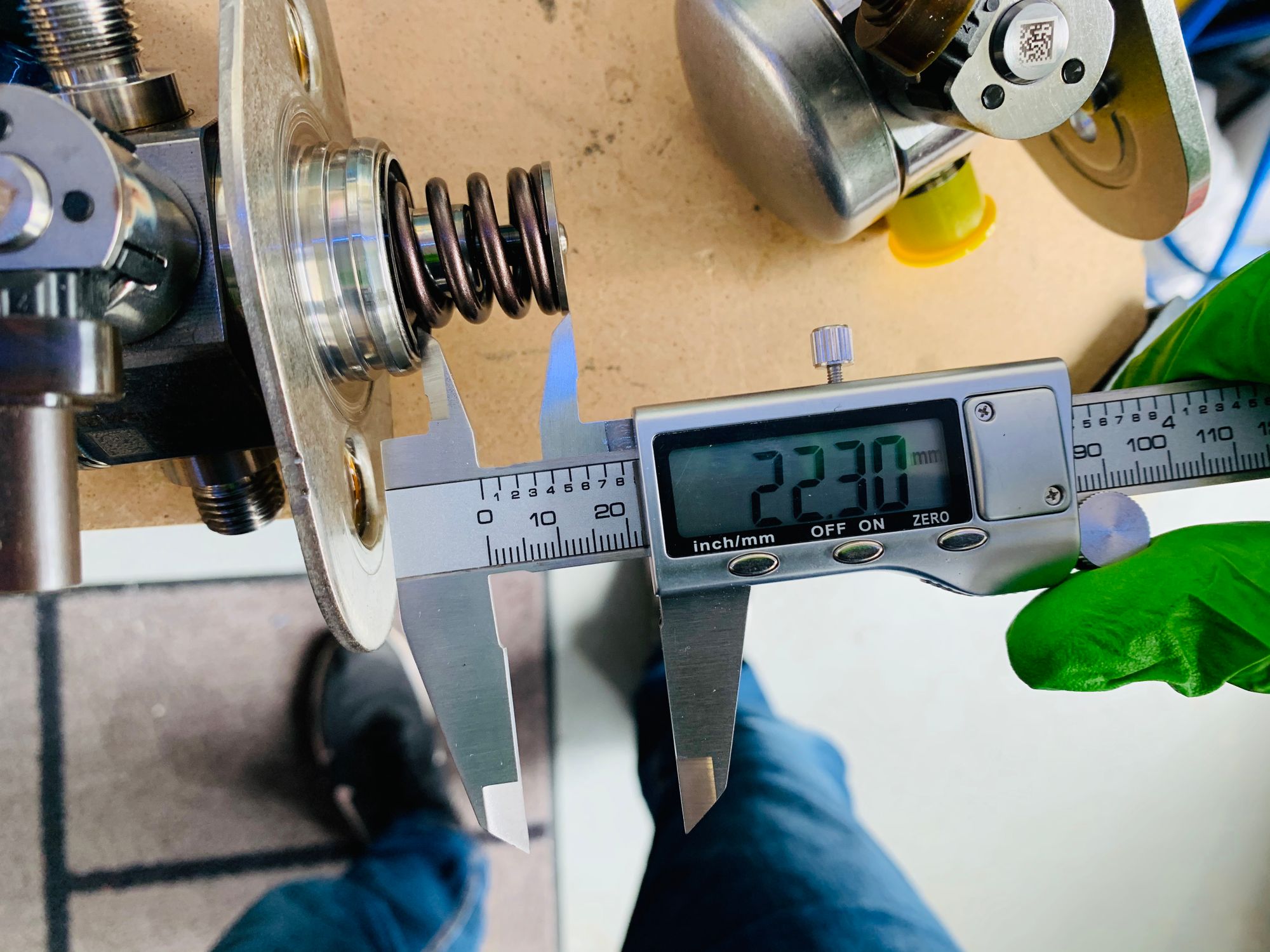
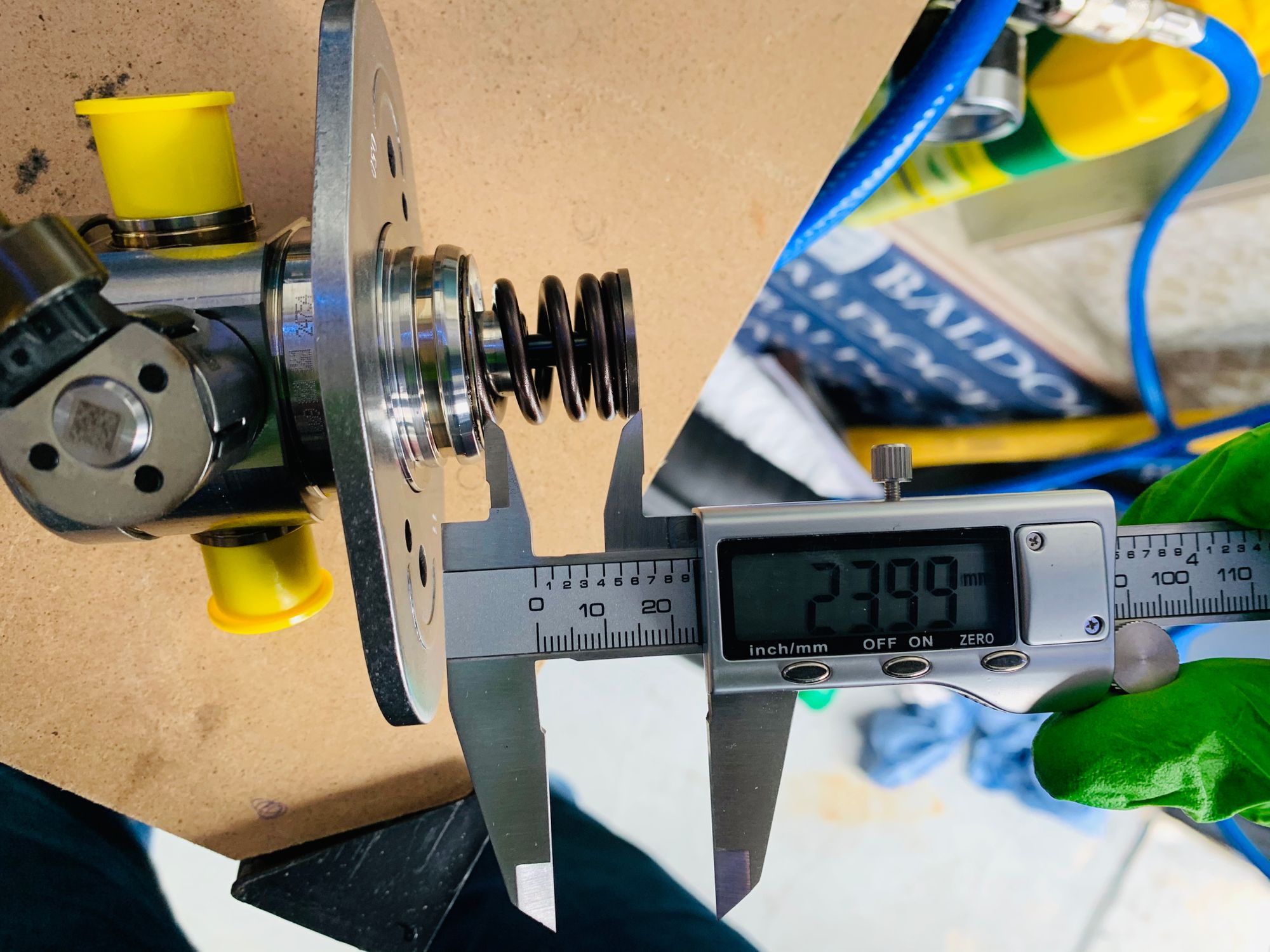
As you can see, the piston on the new HPFP is quite a good amount larger which means for each 'pump' of the HPFP we're getting a larger quantity of fuel being pushed through, which is exactly what we want! The reason I went for this HPFP is that it's actually from a variant of my engine (B58-TU) used by Toyota in the new A90 Supra. It's a direct (physical) replacement for the one I have, it's an OEM part and other than producing a higher flow rate of fuel, it's really no different so I shouldn't have any issues with it in the long run. The great thing about the higher flow rate that this HPFP provides is that I can now make more power because with more fuel + more air you get more power, but also because I will now be able to run higher concentrations of ethanol in my fuel and the HPFP will be able to meet the demand. My goal is to step up to E50 and run the car on 50% renewable ethanol!
Spark Plugs
"While you're in there". It's the most expensive phrase a car person will ever utter. Because I've already spent a couple of hours taking the car apart, and will probably spend similar putting it back together and testing it, if there are any jobs you can do "while you're in there", you may as well do them now. Changing the spark plugs on my car requires all of the labour I've just carried out, so changing them now will save that labour in the future, but means changing the spark plugs a little earlier than required. I'm a big fan of preventative maintenance and spark plugs are cheap enough to not worry too much about them. Not wanting to just replace the spark plugs with the standard ones I did some research and looked if there were better options for higher power applications like mine or even running on ethanol/methanol based fuel. Turns out there was and I ordered some spark plugs from the newer variant of my engine again (B58-TU) that are used in the new BMW Z4 and the A90 Toyota Supra.
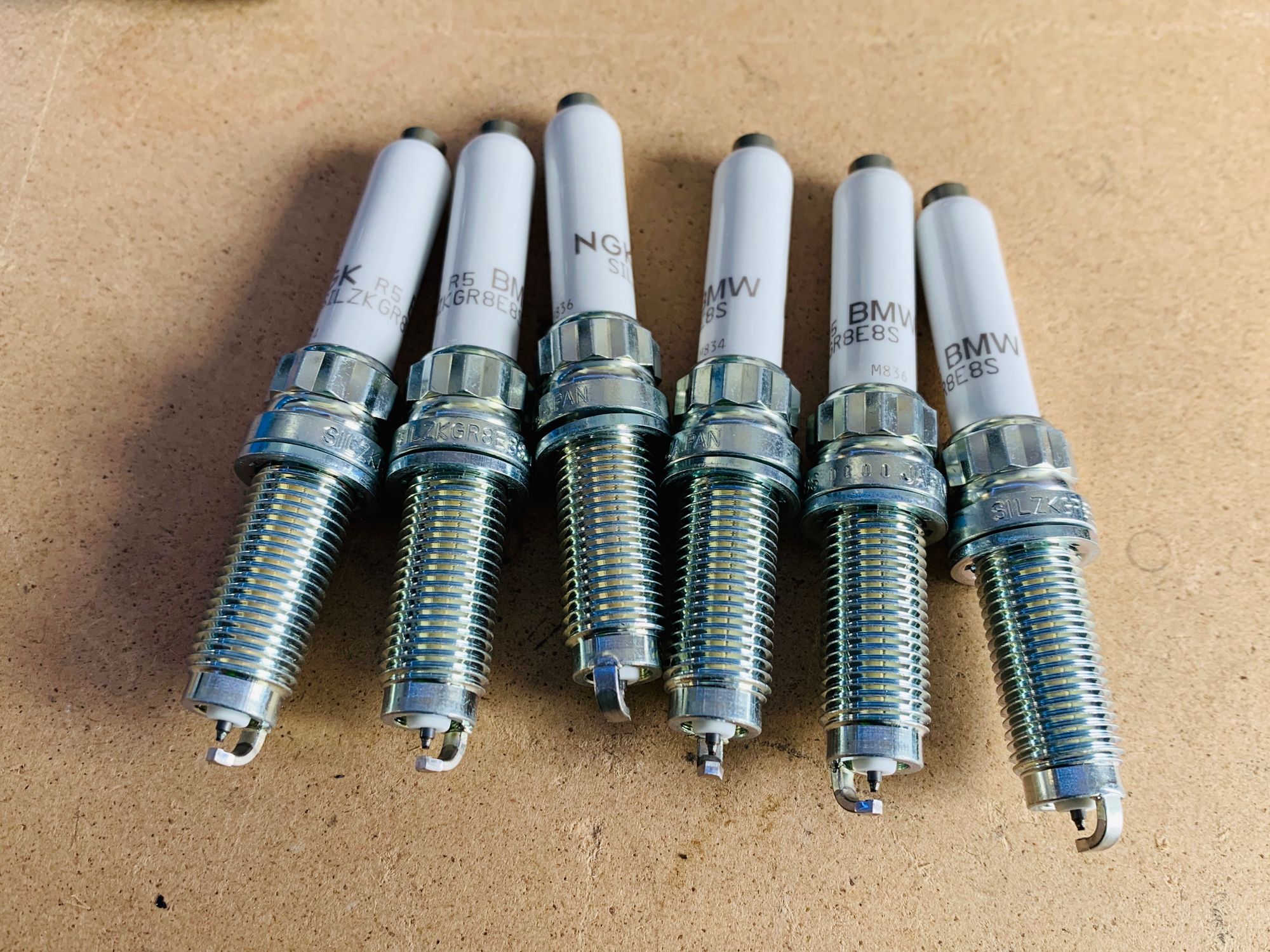
Whilst I wasn't experiencing any ignition related issues, it has been widely reported that these new plugs will help to reduce timing corrections, especially when pushing for big power. With a reduced gap (the air-gap between the centre electrode and ground electrode that the 'spark' jumps across to ignite the fuel) of 0.022" they were ready for installation and the car was ready to be put back together.
Flashing the ECU
Changing the spark plugs doesn't require any action here but the change in HPFP definitely does, the car needs to know that something quite significant has been changed. Back in Part 4 I mentioned the BootMod3 software I use for flashing my car and the OTS map pack I bought. I flashed on Stage 1 back then, Stage 2 in Part 8 and Stage 2 E30 in Part 12 when I switched to the ethanol fuel blend. Now, it's time for another map switch again, this time to Stage 2+ E30!

In the map configuration you can select which upgraded HPFP you went for and it will adjust the fuelling based on the HPFP you select.

As you can see there are other options available now including the Dorch Stage 1, Dorch Stage 2, Spool FX-150 and Spool FX-180. I decided to go for the B58-TU HPFP but it's always good to have other options available! Even though I didn't change anything other than the HPFP, there's still a nice power gain to be had here and the official numbers from the BM3 OTS Maps are as follows, with me going from Stage 2 E30 to Stage 2+ E30.

We all of course know there's only one way to actually test this and that is of course to strap it down on a dyno and do some power runs!

The dyno shop was hesitant to say the least when I phoned up and said I had a BMW 1 Series that was expecting to hit 500+bhp but wow did it smash my target achieving a peak power output of 518.2Bhp from the mighty B58!! Some say this is a ludicrous amount of power to have from a daily-driven family car and I absolutely agree, it's why I love it!
Future plans
Some might think having a daily-driven family car with an engine putting out over 500bhp was enough, but I'm certainly not planning on letting this be the end. I've done some pretty extensive upgrades in the interior that I plan to talk about, because we have to remember that inside the car is where you spend all of your time(!) and this is by no means the end of the power or mechanical modifications either. There's a hybrid turbo on the horizon and if things go the way I'd like them to go, that will have me chasing 800bhp in the not too distant future 😎
Parts
Here's the list of parts used in Part 13 and where you can get them:
B58-TU Spark Plug (x6 needed)
View all of the other blog posts here: The BMW M140i Project Series
